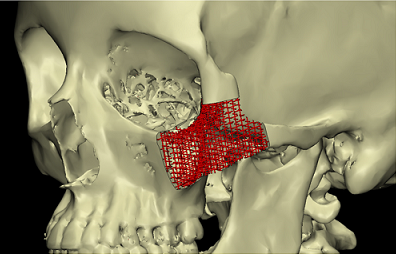Competitive Advantages
- Resorbable, malleable scaffold allows customization and intraoperative adjustments.
- The implant promotes osteoinduction and osteoconduction, resorbs completely, and eliminates future removal.
- Enhances the implant with bone grafts or morphogenic proteins providing a tailored, patient-specific approach.
Summary
Bone defects and reconstruction present significant challenges due to the need for materials that effectively integrate with existing bone tissue while providing structural support. Traditional approaches like autografts and allografts are limited by availability, immune rejection, and disease transmission, while synthetic implants often lack the biological properties necessary for effective bone healing and regeneration. This results in suboptimal outcomes in bone augmentation, stabilization, and defect reconstruction, highlighting the need for improved implant materials that combine structural integrity with biological functionality.
Our researchers developed a novel implant for bone tissue augmentation, stabilization, or defect reconstruction. This implant combines osteoinductive and osteoconductive capabilities within a resorbable, malleable scaffold composed of polylactic and polyglycolic acid isomers, along with allogenic bone material. The implant's customizable structure, which can be configured as a mesh or lattice, allows for enhanced structural support and biological integration, promoting complete resorption and replacement by bone. This innovation offers a significant improvement over existing implants by facilitating better bone healing and regeneration, with potential applications in facial reconstruction and beyond.

3D Model of the Mesh / Lattice Structure of a Bone Implant for Zygoma Reconstruction
Desired Partnerships